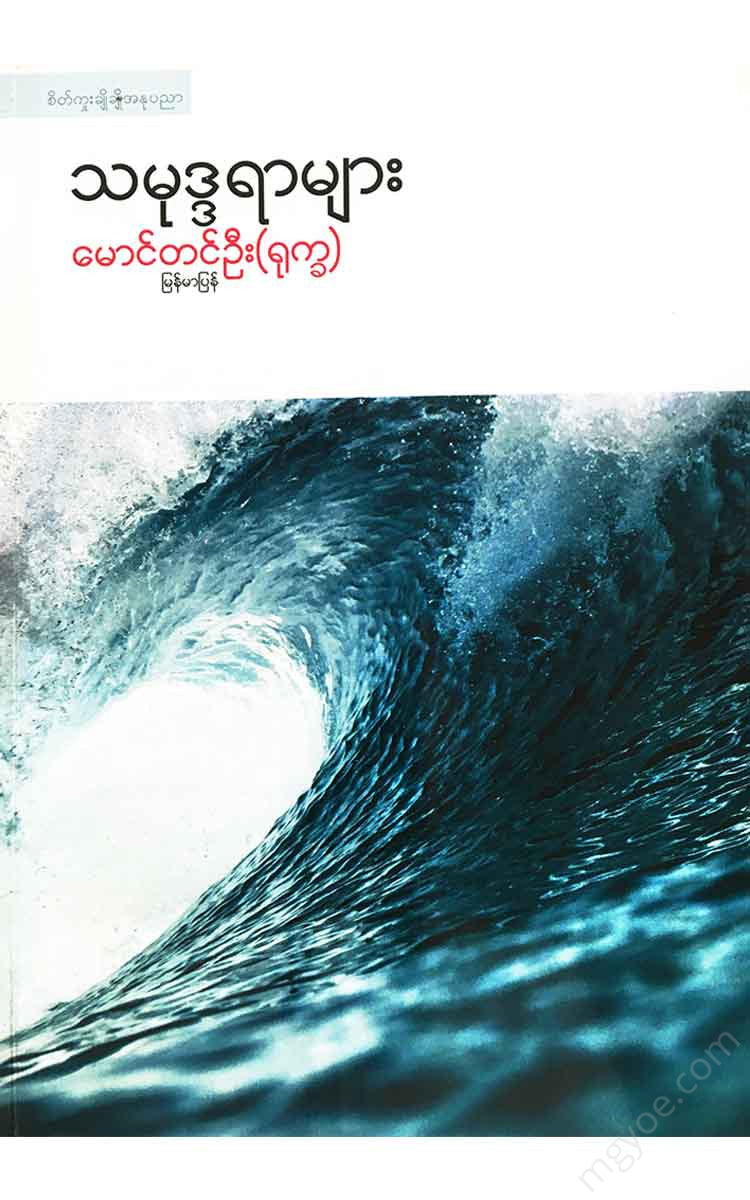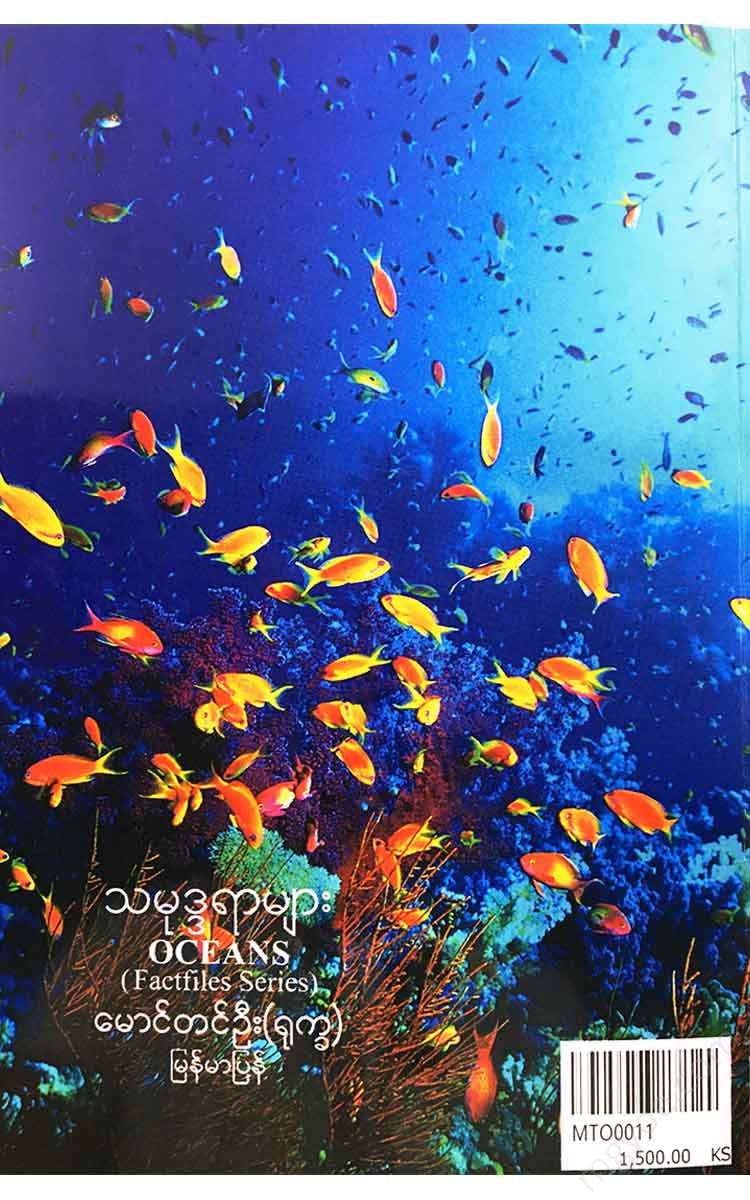စိတ်ကူးချိုချိုစာပေ
Maung Tin Oo (Rukkha) - Oceans
Maung Tin Oo (Rukkha) - Oceans
Couldn't load pickup availability
Introduction
Oceans
Our planet is more ocean than land. The first voyage around the world by a sailing ship was not more than five hundred years ago. The deepest dive to the ocean floor was only accomplished in the last fifty years.
Just as huge waves form along the ocean's surface, warm ocean currents and cold ocean currents flow across our continents. The largest animals on this planet live in the Southern Ocean, and we can find animals living in the darkest parts of the ocean's hot spots. The ocean is a world of incredible natural wonders, and we are only just beginning to understand it.
Chapter (1)
Ocean planet
If you look up at the sky at night, you will see stars as far as the eye can see. If you try to count the stars you can see, there are so many that you will not be able to count them. Most of the stars provide light to the planets in the universe. Of all the planets that receive light from these stars, only Earth is a planet that is inhabited by life. Why? The answer is complete in one word. That one word is “water.”
If we were to look at our planet from a very distant location, for example from space, we would see that the color of the planet Earth is not yellow like the Sun, one planet, or white like the Moon, another planet, but rather a bluish color. This bluish color is caused by the oceans that cover 72 percent of our planet's surface. For this reason, it would be reasonable to rename our planet Earth as the Ocean Planet.
Most animals live in the oceans rather than on land. The reason these animals depend on the oceans is because there is so much food for them to eat. How does this food get into the oceans? The main food for our ocean-dwelling animals is the plants that grow in the ocean. So if these plants were to be removed from the ocean, only a small number of species would be able to survive in the ocean. Plants need sunlight and water to make food. In addition, plants need minerals to make food. These minerals can only be obtained on land. Therefore, it is clear that the survival of most life in the ocean also depends on land. However, the survival of life on land also depends on the ocean. Therefore, it is clear that the survival of life depends on the interaction between the ocean and the land.
Water is essential for the survival of all of us living on land. We can only get this essential water from the oceans. Clouds carry water from the oceans in the form of water vapor. Winds blowing over the ocean carry the water vapor in the clouds towards the land. When the clouds reach the land, the water vapor they carry is deposited as rain and falls on our crops and rivers.
Therefore, the oceans create our weather and climate. The presence of oceans on our planet helps to balance the climate, preventing extremes of heat and cold across the planet. The ocean currents carry warm water to cooler regions and cool water to warmer regions. In addition, the constant movement of ocean water allows life to thrive in every part of the planet. We will learn more about these issues later in Chapter 7.
The oceans can be both good and bad for us. We fear not only the storms we encounter on our journeys at sea, but also the tsunamis that can occur on the ocean floor. However, for most of us, the oceans are a place of adventure, wonder, and hope. The thrill of stepping into a boat or ship to embark on an ocean voyage is a pleasurable experience. What we might encounter on the other side of the ocean or in the deepest parts of the ocean was something we could not have imagined 150 years ago. In fact, we have been exploring the oceans for thousands of years. So it is clear that even in those times we had a desire to try to understand more about the world we live in.







